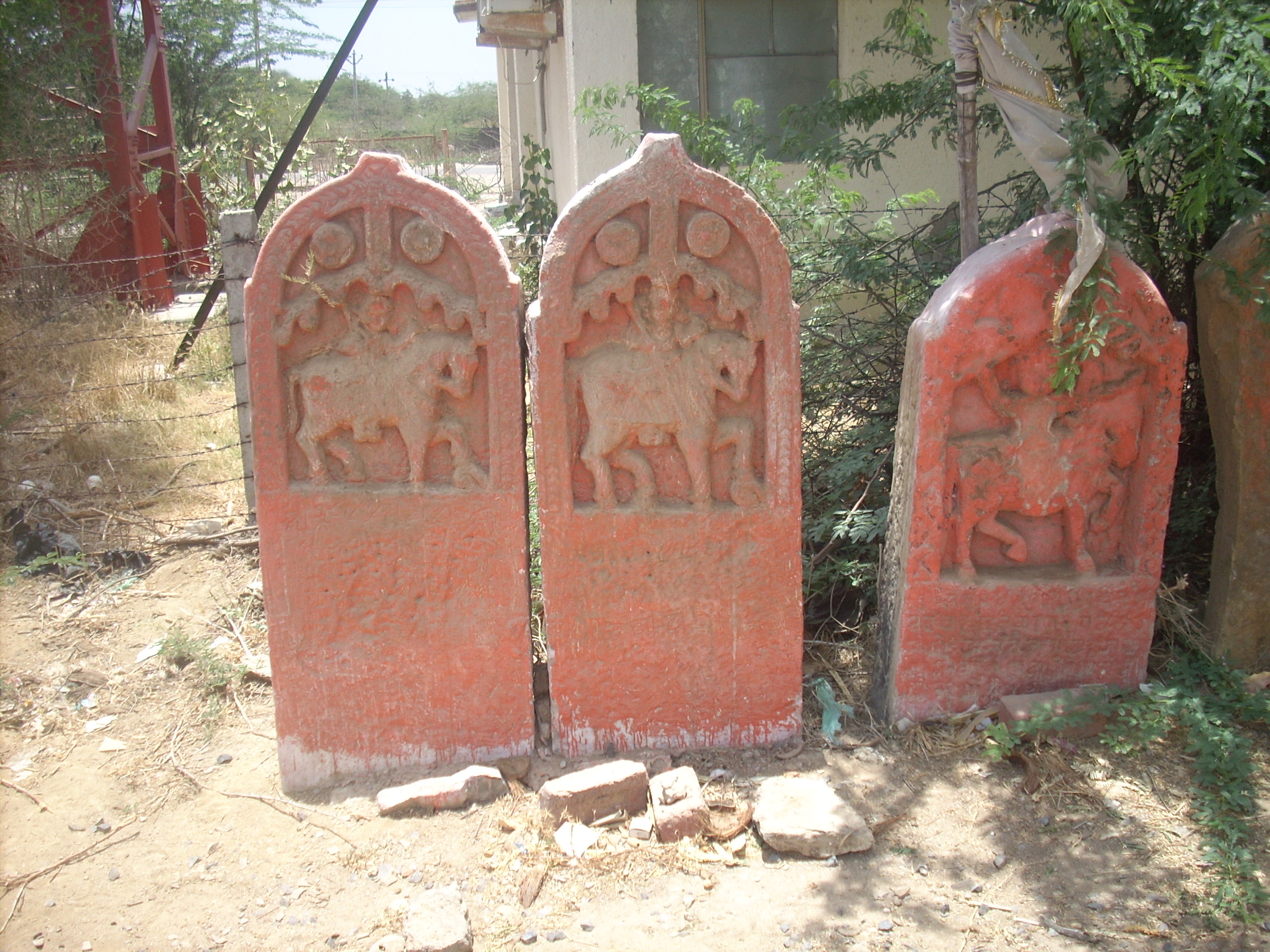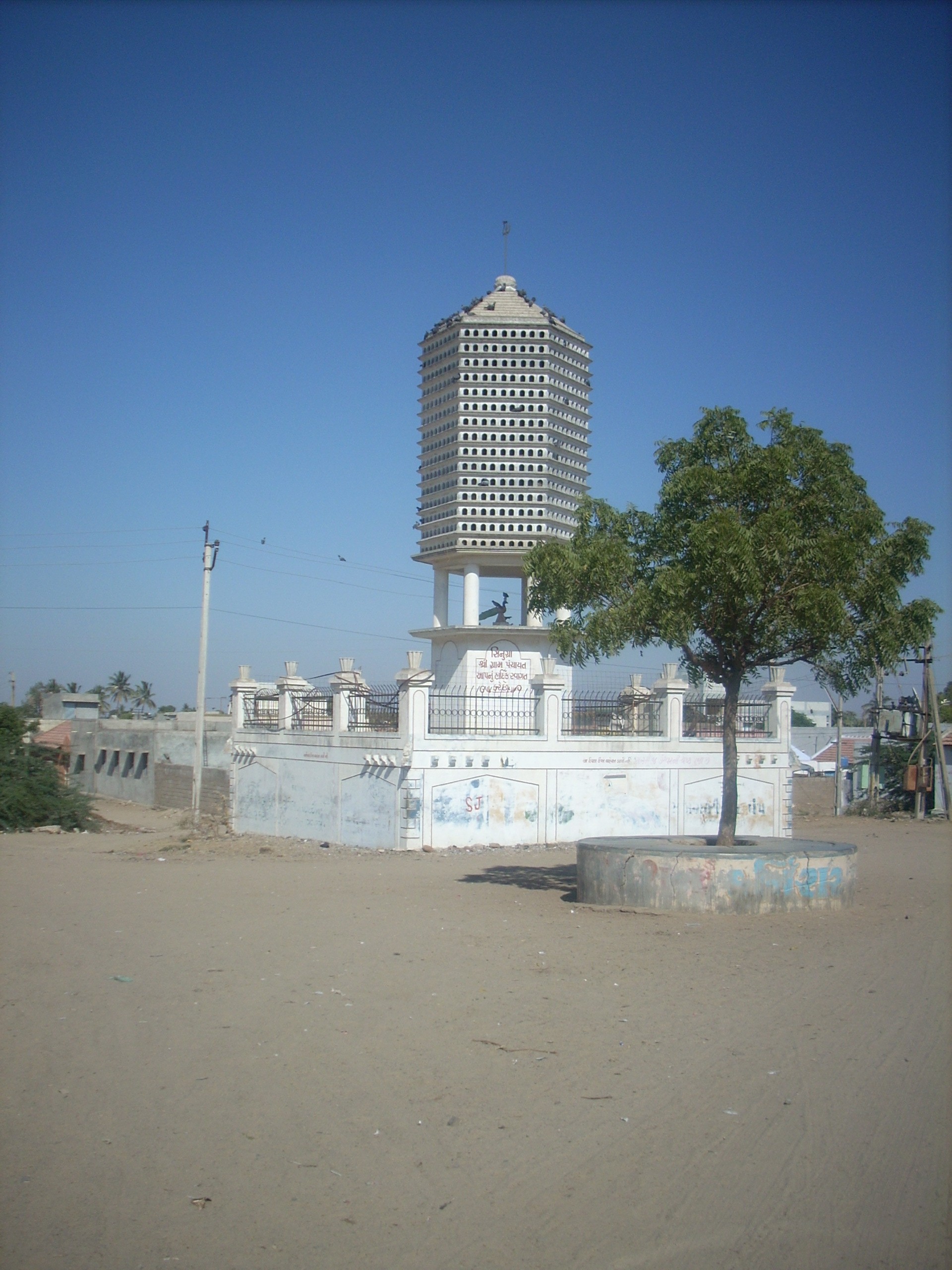|
Nagalpar
Nagalpur Moti or Nagalpar Moti is a small village in Kutch district in the state of Gujarat, India. It comes under Anjar taluka. History About history of Nagalpar or Nagalpur it is one of the 19 villages established by Kutch Gurjar Kshatriyas or Mistris as they are known in Kutch in the 12th century. All the old houses, temples and early infrastructure is built by these Mistri - Gurjar Kshatriya community during 1890-1900. However, majority of old houses with unique architect were destroyed in the earthquake of 26 January 2001.but still it could be hardly seen at some places of nagalpur Temples Thakor Mandir dedicated to Vishnu and Laxmi having beautiful carvings at Nagalpar was built by Lira Valji Tank in 1900. Also there is a Shiva temple, which was also built around 1900. Kuldevi Temples of many clans of these Kutch Gurjar Kshatriya community are also there in this village. For example, Jethwa clan have their Kuldevi Brahmani - Chamunda Mata's temple in village. D ... [...More Info...] [...Related Items...] OR: [Wikipedia] [Google] [Baidu] |
Anjar, India
Anjar is a town, tehsil, township and municipality of the Kachchh district in the state of Gujarat, India. Founded in 650 AD, Anjar is a culturally diverse town of historic importance in the region. It is home to several historic religious temples, including the Jesal-Toral Shrines built in honour of a fourteenth century couple, whose lives inspired works of art and cinema. The town was devastated by several earthquakes, including the 1819 Rann of Kutch earthquake and 2001 Gujarat earthquake. In recent years, Anjar has become a hub of manufacturing activity. History The foundation and early history of the town is unclear, due to a lack of written evidence and documentation. Popular folklore suggests a group of settlers led by Ajay Pal Chauhan (also called Ajepal) – the brother of the king of neighbouring Ajmer – arrived in Anjar in 650 AD (Samvat, Samvat 707). Soon after, Ajay Pal devoted his life to asceticism after his Chauhan clan was defeated by Muslim Rajputs. At differ ... [...More Info...] [...Related Items...] OR: [Wikipedia] [Google] [Baidu] |
Kutch Gurjar Kshatriyas
Kutch Gurjar Kshatriya (also known as Mistri or Mestri) are a minority Hindu and one of the Socially and Educationally Backward communities of Gujarat in India, who claim to be Kshatriyas. They are an artisan community related with Kadia works. They are also known as the Mistri or Mistris of Kutch.Mistri Encyclopaedia of Backward Castes By Neelam Yadav Page 316. History [...More Info...] [...Related Items...] OR: [Wikipedia] [Google] [Baidu] |
Khedoi
Khedoi is large village located 14 km from the town of Anjar and the taluka of Kutch district in the Indian state of Gujarat. The village is sub-divided into Nani-Khedoi and Moti-Khedoi. It has a primary health centre and a major electricity processing plant. The main occupation of the villagers is agriculture. History Khedoi is one of the 19 villages founded by Kutch Gurjar Kshatriyas, who first moved to Saurashtra in the early 7th century. A major group entered Kutch in the 12th century and established themselves at Dhaneti. From the 12th century onwards they moved to settle themselves between Anjar and Bhuj and founded the villages of Anjar, Sinugra, Khambhra, Nagalpar, Khedoi, Madhapar, Hajapar, Kukma, Galpadar, Reha, Vidi, Ratnal, Jambudi, Devaliya, Lovaria, Nagor, Chandiya, Meghpar and Kumbharia. All the old ... [...More Info...] [...Related Items...] OR: [Wikipedia] [Google] [Baidu] |
Mistris
Kutch Gurjar Kshatriya (also known as Mistri or Mestri) are a minority Hindu and one of the Socially and Educationally Backward communities of Gujarat in India, who claim to be Kshatriyas. They are an artisan community related with Kadia works. They are also known as the Mistri or Mistris of Kutch.Mistri Encyclopaedia of Backward Castes By Neelam Yadav Page 316. History [...More Info...] [...Related Items...] OR: [Wikipedia] [Google] [Baidu] |
WikiProject Indian Cities
A WikiProject, or Wikiproject, is a Wikimedia movement affinity group for contributors with shared goals. WikiProjects are prevalent within the largest wiki, Wikipedia, and exist to varying degrees within sister projects such as Wiktionary, Wikiquote, Wikidata, and Wikisource. They also exist in different languages, and translation of articles is a form of their collaboration. During the COVID-19 pandemic, CBS News noted the role of Wikipedia's WikiProject Medicine in maintaining the accuracy of articles related to the disease. Another WikiProject that has drawn attention is WikiProject Women Scientists, which was profiled by '' Smithsonian'' for its efforts to improve coverage of women scientists which the profile noted had "helped increase the number of female scientists on Wikipedia from around 1,600 to over 5,000". On Wikipedia Some Wikipedia WikiProjects are substantial enough to engage in cooperative activities with outside organizations relevant to the field at issue. For ex ... [...More Info...] [...Related Items...] OR: [Wikipedia] [Google] [Baidu] |
Dargah
A dargah ( fa, درگاه ''dargâh'' or ''dargah'', Turkish: ''dergâh'', Hindustani: ''dargah'' दरगाह درگاہ, bn, দরগাহ ''dorgah'') is a shrine or tomb built over the grave of a revered religious figure, often a Sufi saint or dervish. Sufis often visit the shrine for ziyarat, a term associated with religious visits and "pilgrimages". Dargahs are often associated with Sufi eating and meeting rooms and hostels, called ''khanqah'' or hospices. They usually include a mosque, meeting rooms, Islamic religious schools (madrassas), residences for a teacher or caretaker, hospitals, and other buildings for community purposes. The same structure, carrying the same social meanings and sites of the same kinds of ritual practices, is called ''maqam'' in the Arabic-speaking world. Dargah today is considered to be place where saints prayed and mediated (their spiritual residence). Shrine is modern day building which encompasses of actual dargah as well but n ... [...More Info...] [...Related Items...] OR: [Wikipedia] [Google] [Baidu] |
Gaidher
Gaidher / Gaidhar also known as Gajdhar is a word of Gujarati, Kutchi and Rajasthani language. The word Gaidher derives its origin from the word ''Gadh'' or ''Garh''. The word ''Gadh'' in north Indian languages like Hindi, Gujarati, Rajasthani, Marwari, Marathi means a fort, like Chittorgarh, Sinhgadh, Mehrangadh. The persons who were expert and had skilled knowledge to plan and build a fort were called Gaidher or Gajdhar. Gaidhar means chief architect. Gaidhar literally also means a construction foreman or a Master Mason.''Gaidhar : Master Mason; Construction Foreman'' from Bhuj, Art, Architecture, History by Azhar Tyabji, Environmental Planning Collaborative (Ahmadābād, India)Mapin, 2006 :pp 72, 78, 138, 189, 238. Forts were built at strategic locations, often on a hill-top, to guard the kingdoms. Gaidhar held an important place in king's court and were looked upon with respect. Gaidhar were appointed by kings, upon their skills and also loyalty. Gaidhar were persons of hi ... [...More Info...] [...Related Items...] OR: [Wikipedia] [Google] [Baidu] |
Chamunda
Chamunda (Sanskrit: चामुण्डा, ISO-15919: Cāmuṇḍā), also known as Chamundeshwari, Chamundi or Charchika, is a fearsome form of Chandi, the Hindu Divine Mother Shakti and is one of the seven Matrikas (mother goddesses).Wangu p.72 She is also one of the chief Yoginis, a group of sixty-four or eighty-one Tantric goddesses, who are attendants of the warrior goddess Parvati.Wangu p.114 The name is a combination of Chanda and Munda, two monsters whom Chamunda killed. She is closely associated with Kali, another fierce aspect of Parvati. She is identified with goddesses Parvati, Kali or Durga. The goddess is often portrayed as residing in cremation grounds or around holy fig trees. The goddess is worshipped by ritual animal sacrifices along with offerings of wine. The practice of animal sacrifices has become less common with Shaivite and Vaishnavite influences. Origins Ramakrishna Gopal Bhandarkar says that Chamunda was originally a tribal goddess, worshipp ... [...More Info...] [...Related Items...] OR: [Wikipedia] [Google] [Baidu] |
Brahmani
Brahmani (Sanskrit: ब्रह्माणी, IAST: Brahmāṇī) or Brahmi (Sanskrit: ब्राह्मी, IAST: Brāhmī), is one of the seven Hindu mother goddesses known as Sapta Matrikas. She is a form of Saraswati and is considered as the Shakti of the creator god Brahma in Hinduism. She is an aspect of Adi Shakti, possessing the "Rajas Guna" and is therefore the source of Brahma's power. Legends When Brahma was in meditation for the creation of the universe, his body was divided into two parts. They then formed the gods and goddesses, whereby one part was male and the another was female. Thus female parts became Gayatri, Sati Savitri, Saraswati, and others. In folklore, Brahmani was once reincarnated as the princess of the Illavaku clan. The king had two daughters, Renuka (incarnation of devi Brahmani) and the other being Sahastrakala. Once at the banks of Sarasvati river, sage Jamadagni and the king held the Svayamvara for Renuka and she married the sage. T ... [...More Info...] [...Related Items...] OR: [Wikipedia] [Google] [Baidu] |
Jethwa
Jethwa (or Jethva, Jaitwa, Jethi) is a clan (Gotra) Rajput and Koli castes of Gujarat. See also *rathwa Origin It has been suggested that the Saindhava dynasty ruling eastern part of Saurashtra peninsula is now represented by the present day Jethwa dynasty. It is also suggested that the term Jethwa probably originating from Jayadratha (another name of Saindhawa dynasty), Jyeshtha (the elder branch) or Jyeshthuka from which the region derived its name Jyeshthukadesha. Other details and Kuldevis The ''Jethwa'' Rajputs belong to the Gautam/Vajas Gotra and their Kuldevi is Vindhyavasini Devi. Folk art and culture of Gujarat: guide to the collection of the Shreyas Folk Museum of Gujarat, 1980 Jethwas also worship |
Kuldevta
A kuladevatā (), also known as a kuladaivaṃ, is an ancestral tutelary deity in Hinduism and Jainism. Such a deity is often the object of one's devotion ('' bhakti''), and is coaxed to watch over one's clan (''kula''), gotra, family, and children from misfortune. This is distinct from an '' ishta-devata'' (personal tutelar) and a grāmadevatā (village deities). Male kuladevatas are sometimes referred to as a kuladeva, while their female counterparts are called a kuladevi. Etymology The word ''kuladevata'' is derived from two words: ''kula'', meaning clan, and ''devata'', meaning deity, referring to the ancestral deities that are worshipped by particular clans. Veneration The deity can be represented in a male or a female human, an animal, or even an object, like a holy stone. It is believed that rituals done at a kuladeva/kuladevi temple benefits all those genetically connected with the one performing the ritual. Kuladaivams of the Shaiva tradition are often consid ... [...More Info...] [...Related Items...] OR: [Wikipedia] [Google] [Baidu] |
Shiva
Shiva (; sa, शिव, lit=The Auspicious One, Śiva ), also known as Mahadeva (; ɐɦaːd̪eːʋɐ, or Hara, is one of the principal deities of Hinduism. He is the Supreme Being in Shaivism, one of the major traditions within Hinduism. Shiva is known as "The Destroyer" within the Trimurti, the Hindu trinity which also includes Brahma and Vishnu. In the Shaivite tradition, Shiva is the Supreme Lord who creates, protects and transforms the universe. In the goddess-oriented Shakta tradition, the Supreme Goddess ( Devi) is regarded as the energy and creative power (Shakti) and the equal complementary partner of Shiva. Shiva is one of the five equivalent deities in Panchayatana puja of the Smarta tradition of Hinduism. Shiva has many aspects, benevolent as well as fearsome. In benevolent aspects, he is depicted as an omniscient Yogi who lives an ascetic life on Mount Kailash as well as a householder with his wife Parvati and his three children, Ganesha, Kartikeya and A ... [...More Info...] [...Related Items...] OR: [Wikipedia] [Google] [Baidu] |








